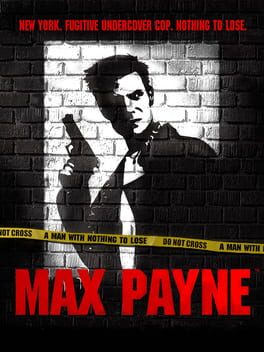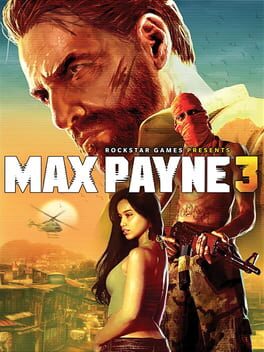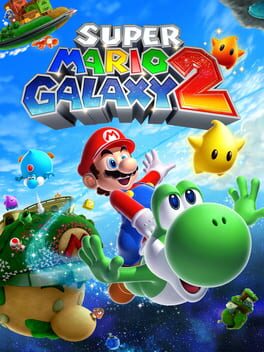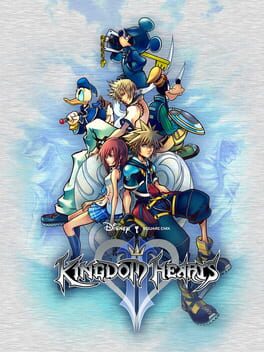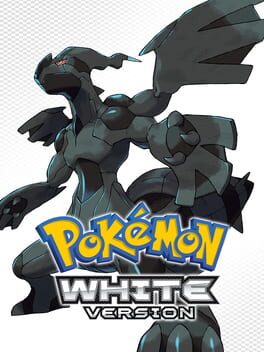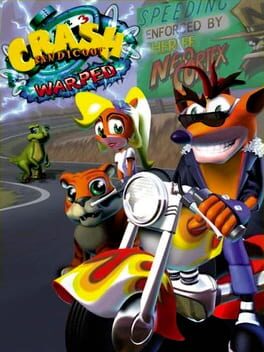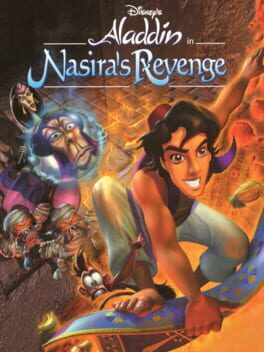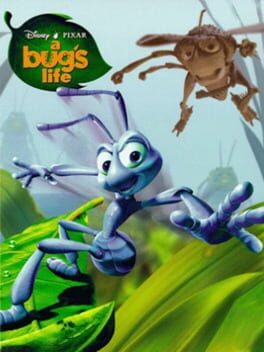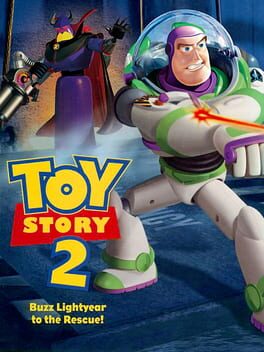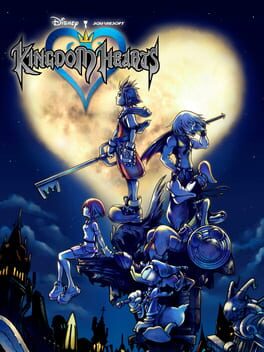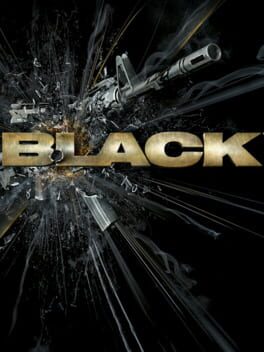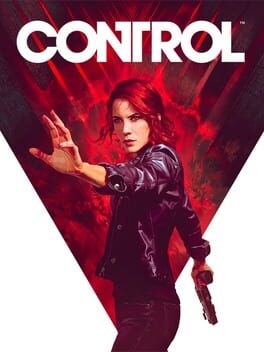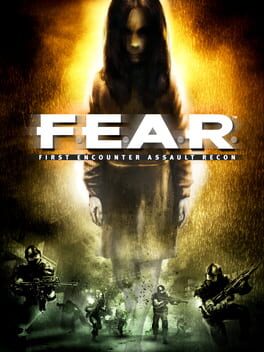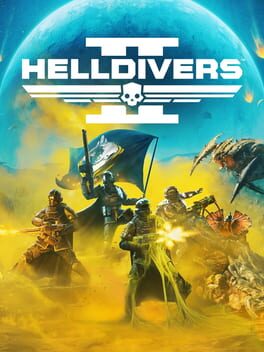jbcrowe
164 reviews liked by jbcrowe
Max Payne
2003
Is it good? Ehhh not really. The big problem is that enemy AI consists entirely of shooting at you the second you're in sight, which is all well and good when your dodging around corners but there are lots of situations where you're stuck taking cheap hits. The devs seemed aware of this and gave you four lives per level that instantly drop you right where you died. Even with that some levels can be a bit annoying and take a couple tries, the manor and underground base especially.
Is it incredibly ambitious, impressive, and worth playing for fans of Max Payne? Abso-fucking-lutely. An incredible amount of work has been put in to faithfully demake Max Payne for the Game Boy Advance, with locations seemingly recycling textures from the main game and memorable setpieces recreated. When the gameplay works as intended you're shootdodging around familiar environments and it's all tied together with *fully voiced" cutscenes from the original game! A couple levels had to be cut - the boat and parking garage and the nightmare sequences aren't playable - so there are a couple awkward cuts in the story, but the amount of effort into making it all feel like Max Payne is incredible and worth a couple hours of your time if you're a fan.
Is it incredibly ambitious, impressive, and worth playing for fans of Max Payne? Abso-fucking-lutely. An incredible amount of work has been put in to faithfully demake Max Payne for the Game Boy Advance, with locations seemingly recycling textures from the main game and memorable setpieces recreated. When the gameplay works as intended you're shootdodging around familiar environments and it's all tied together with *fully voiced" cutscenes from the original game! A couple levels had to be cut - the boat and parking garage and the nightmare sequences aren't playable - so there are a couple awkward cuts in the story, but the amount of effort into making it all feel like Max Payne is incredible and worth a couple hours of your time if you're a fan.
Max Payne
2003
An interesting port (one could also call it an official demake) which turns Max Payne 1 into an isometric shooter.
There's a decent amount of voice acting, the comic book panels are implemented well, the atmosphere is a good replica considering what they worked with and the developers did their best to include a good variety of weapons and make the gameplay as action packed as possible.
Your sight is a little limited which can sometimes mean taking a few cheap shots, but l didn't find this to be much of a issue with the exception of the semi-last level. That one can take a bit of patience.
The game is pretty short and can be finished in a little over 2 hours.
While not really something someone should go out of their way to play, if you're a fan of the Max Payne games, you could give this one a try and appreciate the ambition.
There's a decent amount of voice acting, the comic book panels are implemented well, the atmosphere is a good replica considering what they worked with and the developers did their best to include a good variety of weapons and make the gameplay as action packed as possible.
Your sight is a little limited which can sometimes mean taking a few cheap shots, but l didn't find this to be much of a issue with the exception of the semi-last level. That one can take a bit of patience.
The game is pretty short and can be finished in a little over 2 hours.
While not really something someone should go out of their way to play, if you're a fan of the Max Payne games, you could give this one a try and appreciate the ambition.
Max Payne
2003
The GBA version of this game is actually sick as hell.
Ultros
2024
I love-hated Ultros and I do-don’t recommend it. Like as a love child of two visionaries, it’s a perfect game for your shelf; and probably worth having the physical edition purely for how it draws the eye and stands-out in a sea of similar looking games. On the other hand, it’s got some of the worst gamefeel of any metroidvania I’ve played in a while, often leaving me disoriented, confused, and unclear if I’m supposed to be banging my head against some spinning spikes or… something else? At least the shitty tools the game gives you are uniquely unlike other unlock able in games like it. So, yeah, it’s kind of a bad time, but also a part of an uncharted alien timeloop inside the guts of a space uterus / sarcophagus that I couldn’t say no to.
Ultros
2024
Okay don't get me wrong, there are some really cool and unique mechanics here and the soundtrack/art style is sublime. However there's a big obstacle that brings this game so far down for me. I started this game saying I wouldn't look anywhere for online help and just take my time moving through and experiencing it. For a game like this, that throws so many different mechanics at you in cryptic language, doesn't take the time to explain or retain any sort of explanation I felt I heavily misunderstood a few key mechanics like feeding animals to create more gardens, using compost to make plants grow faster, etc. But for the first half of the game none of that is really necessary at all to understand. So during the first half I had a great time, treated it just like any other metroidvania. But then you unlock this "living network" mechanism and realize you can connect up the shamasal you've already killed. Now again, I'm not using any outside help here, so I figured that in order to beat the game I not only needed to kill every shamasal, but I also needed to link every one up to the network. So I spend hours trying and failing to link up these different pathways, trying to pick the right plant, get the right seed, return back to the original spot, etc. I spend hours doing all of this tedious work and only connected 2 shamasal after giving up. This part of the game (if you choose to engage with it) is ridiculous and so very not fun. And it's not very clear that this is entirely optional and the game leads you into believing it's necessary (by providing you with all these different tools for gardening specifically). For me this was a very middle of the road experience, with some very frustrating stretches because I chose to engage with exploration and the mechanics that the game lays out for you. Without the gardening, this would have honestly been a decent game for me.
Ultros
2024
A really interesting game with a lot of really ambitious mechanics all at once, some of which worked (plants!) and some that kind of didn't (early game loops). The start required a lot of patience, but in the end I loved my time with the game, and I really respect the devs for trying something this imaginative. Also it's a visual delight. Look at that cover art. Delicious.
Max Payne 3
2012
The best playing of the three Max Payne games but my least favorite story as well. Rockstar absolutely nailed the gunplay here - being able to slow down time and headshot every enemy in 5 seconds never got old. The guns were fun to use and the levels were varied, although it did fall into the early 2010s shooter trap of "run here, cutscene, shootout, run here, cutscene, shootout, repeat" after a while. I feel like Max's character was a bit under-baked compared to the previous entries, although the quippy one-liners and sense of malaise in the performance was just as good if not better than Max Payne 1 + 2. As a Max Payne game, 3 felt like a bit of a step backward (which isn't surprising given that this was Rockstar's attempt at the series) but as a shooter it's an absolute blast. Glad I was able to finish out the trilogy.
Hi-Fi Rush
2023
I certainly had a fun solid time with it. With a killer soundtrack and DMCesque combat with an easy to pick up hard to master rhythm to the whole thing, it feels like a PS2 game (complimentary) without falling into being a PS2 game (derogatory). I was definitely charmed by the cast by the end. Definitely worth checking out.
Hi-Fi Rush
2023
I’m late to the party because it ended up taking me over a month to finish after getting distracted with real life, but I gotta say… if this is how Shinji Mikami chooses to go out, then what a way to go out indeed.
The easiest way for me to describe Hi-Fi Rush is that simply put, it just works. Melding rhythm game and character action game/spectacle fighter mechanics clicked right away for me due to the natural process of acclimating to the classic push and pull of combat; figuring out enemy behavior and deciding how to best exploit that is often linked to cycles after all, so why not pair that with choruses and motifs of classic song structure to turn the whole experience into a musical symphony? The level of detail that Tango Gameworks instills to immerse the player and keep them on beat is admirable; pulsing LED walls, bouncing hedges and trees, synced-up lasers and retractable platforms to keep the player accountable, even Chai’s audible footsteps when romping about or his idle animation of swaying and snapping his fingers to the beat are all there to make sure you never lose track of the flow of the gameplay.
The linkages between the main “chorus” engagements are a bit more of a mixed bag admittingly, not necessarily because they’re “bad” but rather because these sections feel quite simple when compared to the flashy combat. During the lowest points of this level traversal, Chai gets to wander about these mostly deserted linear corridors (sometimes with hidden offshoots for collectibles) and occasionally wack a couple of crates for health or gears. There’s also a good chunk of platforming involved, but it’s definitely a bit awkward at first and never quite fluid. Chai doesn’t have a lot of standard horizontal momentum but can very quickly double jump, so classic platforming feels a little more precarious than it needs to be and often requires the quick forward dash to snag that extra distance. The result is an interesting conundrum, in that it’s super easy to undershoot without the dash but also surprisingly easy to overshoot while using the dash, never quite hitting that sweet spot.
Fortunately, the difficulty does scale up as you progress further into the story, and it’s much more enjoyable once the designers get to let loose by inserting more and more specialized elements. Shoot a barrier here, smash a wall over there, grapple through a series of skyhooks or chain rocket jumps to the beat to gain height, and so on, so forth. This is all is more or less a series of scripted action sequences that could just be thought of as a more complex 3D version of Bit Trip Runner, so while I’m clearly nitpicking, I do feel like these sections could be spiced up by scattering in some overworld enemies as obstacles that could also serve as anchor points to quickly grapple towards for skilled players to retain momentum. Regardless, the best of these segments will keep you moving forward and actively tapping your foot to the beat like a playable music video, and who’s really going to complain when you get to zipline and dodge hanging containers to Inazawa Chainsaw?
If there’s any real complaints that I have, it’s that Hi-Fi Rush's combat almost feels a bit too straightforward. There are two main components to this, and I’ll be deferring to a few other reviews I’ve read because I am more or less a noob at character action games (though I did still clear story mode on Hard difficulty despite this being the first character action game that I have ever beat, whatever that might be worth) and I think their perspectives added a lot to what I think could be touched upon in future works.
Firstly, Hi-Fi Rush has a few too many fail-safes in my opinion. The easiest way to explain this one is that positioning is unfortunately not very important in the grand scheme of combat. I’m going to agree with GoufyGoggs here to some degree: because enemy attacks are tied to the beat, and parrying actually cancels any of Chai’s attacks regardless of animation length or exact timing during the animation length, it’s fairly doable for players to auto-pilot by mashing attacks to wail on enemies (since the game doesn’t really punish you for attacking off beat as is) and correctly parry in time according to the given audio/visual cues as hinted by the background tracks to avoid taking damage at all. If this isn’t up your avenue though, it’s also pretty easy to cheese combat. Since enemy attacks lock-on and are telegraphed with quite a generous window, it’s pretty simple to continually dodge attacks by mashing the fast and high double jump or dashing to the beat in a circle around enemies, and then spamming your buddies’ assists to soften up opponents/tear through their super armor gauge because as CheesyChip has brought up, there’s not much of a cooldown, even without using the relevant support cooldown chips. It then becomes pretty trivial to lock onto enemies to go for the kill, by using the quick Magnet Grab to close distance as long as Chai’s looking in the proper direction, or if they’re close enough, abusing the generous attack magnetism (as pointed out by ProudLittleSeal here) to segue into a combo. I think these gaps could have been somewhat closed up if your attacks were more committal and couldn’t instantly be cancelled by parry (at least making the first few frames of the animation non-cancellable), if more enemy attacks were homing/adjustable so you couldn’t dodge everything by just mashing jump and dash, and if the support character cooldown was lengthened just a tad. To sum this up, Hi-Fi Rush’s combat is very honest about what it is and what to expect, which is why streamlining the combat to this degree makes it that much more basic when you’re willing to actively break and exploit the systems.
Secondly, while Hi-Fi Rush certainly provides a lot of room for creativity regarding combo potential, I’m not sure if the circumstances necessitate experimentation or for that matter, really encourage it. There are a lot of purchasable flashy standard combos that can be quite helpful with all different types of range and animations, but you don’t really need most of these combos when the grapple and dash will help you close distances and chain most combos as is and your standard bread and butter combos will get you through anyways if you’re not actively chasing high scores; even Rhythm Master difficulty of dropping below a C with the rhythm gauge shouldn’t be an issue as long as you’re landing all your hits and parrying/dodging most attacks. As pointed out by CheesyChip, these purchases are often pretty pricey and those gears can instead be used to purchase permanent upgrades like increased life gauge capacity, a health tank to revive Chai if he runs out of health, or Reverb Gauge increases to allow for stronger Special Attacks (which also will rack up a pretty penny). The actual levels will give you just enough gears for the necessities or to swap/try out a few attacks, and you can sell unused attacks if you need money in a pinch, though optimal level scrounging usually won’t provide enough to tackle both causes at once and you can’t grind levels with replays during the first run of story mode. That said, this concern is at least alleviated if you clear challenges on the Rewards board for gears (and this was in fact my main income during the latter half of the game), though it’s rather annoying that you can’t check up on your task progress in-between levels without exiting to the main menu and loading back into the hideout before returning to checkpoints. I also freely admit that my money was most likely not well spent on upgrading the chips and buying additional chip slots, which I found rather underwhelming since most of the chip upgrades were simple 10%/20%/30% stat upgrades (depending on the level the chip was upgraded to and however many slots it took up) and it was often more fruitful trying out new special attacks or focusing on the other permanent upgrades.
Nevertheless, I found that these areas of improvement were ultimately minor blemishes during my overall time spent; while I’ve spent a good chunk of time nitpicking systems and sections that could be even better with some touchups here and there, the core concepts and general execution absolutely kept me hooked. Aside from a strange glitch where my dodges failed to register during specific defense sequences of the final boss (forcing me to have to complete the ending segment of the final boss on Normal mode, where the glitch was inexplicably missing), Hi-Fi Rush was a thrill ride that I didn’t want to get off. The vibrant cel-shaded visuals, the clean and easy to grasp combat alongside rocking tunes that are more than happy to reward you for paying attention to the underlying rhythm, and a colorful and focused cast of characters with plenty of dad jokes, jovial banter, and layers upon layers of development and personality… I could go on and on about why this was such a memorable experience for me. Kudos to Tango for having the balls to shadow drop the game within the first month of the year, because as I see it, most major releases of 2023 will have trouble matching up to this.
Hi-Fi Rush is a game that feels so alive, and it feels damn good to have been alive taking in this breath of fresh air. As usual, I look forward to Shinji Mikami’s future endeavors if this is the level of creativity and cohesion that can be expected from him simply producing. And even if there is no next time, here’s hoping that Hi-Fi Rush will encourage many more greats to come with its unabashed charm and unapologetic sincerity.
The easiest way for me to describe Hi-Fi Rush is that simply put, it just works. Melding rhythm game and character action game/spectacle fighter mechanics clicked right away for me due to the natural process of acclimating to the classic push and pull of combat; figuring out enemy behavior and deciding how to best exploit that is often linked to cycles after all, so why not pair that with choruses and motifs of classic song structure to turn the whole experience into a musical symphony? The level of detail that Tango Gameworks instills to immerse the player and keep them on beat is admirable; pulsing LED walls, bouncing hedges and trees, synced-up lasers and retractable platforms to keep the player accountable, even Chai’s audible footsteps when romping about or his idle animation of swaying and snapping his fingers to the beat are all there to make sure you never lose track of the flow of the gameplay.
The linkages between the main “chorus” engagements are a bit more of a mixed bag admittingly, not necessarily because they’re “bad” but rather because these sections feel quite simple when compared to the flashy combat. During the lowest points of this level traversal, Chai gets to wander about these mostly deserted linear corridors (sometimes with hidden offshoots for collectibles) and occasionally wack a couple of crates for health or gears. There’s also a good chunk of platforming involved, but it’s definitely a bit awkward at first and never quite fluid. Chai doesn’t have a lot of standard horizontal momentum but can very quickly double jump, so classic platforming feels a little more precarious than it needs to be and often requires the quick forward dash to snag that extra distance. The result is an interesting conundrum, in that it’s super easy to undershoot without the dash but also surprisingly easy to overshoot while using the dash, never quite hitting that sweet spot.
Fortunately, the difficulty does scale up as you progress further into the story, and it’s much more enjoyable once the designers get to let loose by inserting more and more specialized elements. Shoot a barrier here, smash a wall over there, grapple through a series of skyhooks or chain rocket jumps to the beat to gain height, and so on, so forth. This is all is more or less a series of scripted action sequences that could just be thought of as a more complex 3D version of Bit Trip Runner, so while I’m clearly nitpicking, I do feel like these sections could be spiced up by scattering in some overworld enemies as obstacles that could also serve as anchor points to quickly grapple towards for skilled players to retain momentum. Regardless, the best of these segments will keep you moving forward and actively tapping your foot to the beat like a playable music video, and who’s really going to complain when you get to zipline and dodge hanging containers to Inazawa Chainsaw?
If there’s any real complaints that I have, it’s that Hi-Fi Rush's combat almost feels a bit too straightforward. There are two main components to this, and I’ll be deferring to a few other reviews I’ve read because I am more or less a noob at character action games (though I did still clear story mode on Hard difficulty despite this being the first character action game that I have ever beat, whatever that might be worth) and I think their perspectives added a lot to what I think could be touched upon in future works.
Firstly, Hi-Fi Rush has a few too many fail-safes in my opinion. The easiest way to explain this one is that positioning is unfortunately not very important in the grand scheme of combat. I’m going to agree with GoufyGoggs here to some degree: because enemy attacks are tied to the beat, and parrying actually cancels any of Chai’s attacks regardless of animation length or exact timing during the animation length, it’s fairly doable for players to auto-pilot by mashing attacks to wail on enemies (since the game doesn’t really punish you for attacking off beat as is) and correctly parry in time according to the given audio/visual cues as hinted by the background tracks to avoid taking damage at all. If this isn’t up your avenue though, it’s also pretty easy to cheese combat. Since enemy attacks lock-on and are telegraphed with quite a generous window, it’s pretty simple to continually dodge attacks by mashing the fast and high double jump or dashing to the beat in a circle around enemies, and then spamming your buddies’ assists to soften up opponents/tear through their super armor gauge because as CheesyChip has brought up, there’s not much of a cooldown, even without using the relevant support cooldown chips. It then becomes pretty trivial to lock onto enemies to go for the kill, by using the quick Magnet Grab to close distance as long as Chai’s looking in the proper direction, or if they’re close enough, abusing the generous attack magnetism (as pointed out by ProudLittleSeal here) to segue into a combo. I think these gaps could have been somewhat closed up if your attacks were more committal and couldn’t instantly be cancelled by parry (at least making the first few frames of the animation non-cancellable), if more enemy attacks were homing/adjustable so you couldn’t dodge everything by just mashing jump and dash, and if the support character cooldown was lengthened just a tad. To sum this up, Hi-Fi Rush’s combat is very honest about what it is and what to expect, which is why streamlining the combat to this degree makes it that much more basic when you’re willing to actively break and exploit the systems.
Secondly, while Hi-Fi Rush certainly provides a lot of room for creativity regarding combo potential, I’m not sure if the circumstances necessitate experimentation or for that matter, really encourage it. There are a lot of purchasable flashy standard combos that can be quite helpful with all different types of range and animations, but you don’t really need most of these combos when the grapple and dash will help you close distances and chain most combos as is and your standard bread and butter combos will get you through anyways if you’re not actively chasing high scores; even Rhythm Master difficulty of dropping below a C with the rhythm gauge shouldn’t be an issue as long as you’re landing all your hits and parrying/dodging most attacks. As pointed out by CheesyChip, these purchases are often pretty pricey and those gears can instead be used to purchase permanent upgrades like increased life gauge capacity, a health tank to revive Chai if he runs out of health, or Reverb Gauge increases to allow for stronger Special Attacks (which also will rack up a pretty penny). The actual levels will give you just enough gears for the necessities or to swap/try out a few attacks, and you can sell unused attacks if you need money in a pinch, though optimal level scrounging usually won’t provide enough to tackle both causes at once and you can’t grind levels with replays during the first run of story mode. That said, this concern is at least alleviated if you clear challenges on the Rewards board for gears (and this was in fact my main income during the latter half of the game), though it’s rather annoying that you can’t check up on your task progress in-between levels without exiting to the main menu and loading back into the hideout before returning to checkpoints. I also freely admit that my money was most likely not well spent on upgrading the chips and buying additional chip slots, which I found rather underwhelming since most of the chip upgrades were simple 10%/20%/30% stat upgrades (depending on the level the chip was upgraded to and however many slots it took up) and it was often more fruitful trying out new special attacks or focusing on the other permanent upgrades.
Nevertheless, I found that these areas of improvement were ultimately minor blemishes during my overall time spent; while I’ve spent a good chunk of time nitpicking systems and sections that could be even better with some touchups here and there, the core concepts and general execution absolutely kept me hooked. Aside from a strange glitch where my dodges failed to register during specific defense sequences of the final boss (forcing me to have to complete the ending segment of the final boss on Normal mode, where the glitch was inexplicably missing), Hi-Fi Rush was a thrill ride that I didn’t want to get off. The vibrant cel-shaded visuals, the clean and easy to grasp combat alongside rocking tunes that are more than happy to reward you for paying attention to the underlying rhythm, and a colorful and focused cast of characters with plenty of dad jokes, jovial banter, and layers upon layers of development and personality… I could go on and on about why this was such a memorable experience for me. Kudos to Tango for having the balls to shadow drop the game within the first month of the year, because as I see it, most major releases of 2023 will have trouble matching up to this.
Hi-Fi Rush is a game that feels so alive, and it feels damn good to have been alive taking in this breath of fresh air. As usual, I look forward to Shinji Mikami’s future endeavors if this is the level of creativity and cohesion that can be expected from him simply producing. And even if there is no next time, here’s hoping that Hi-Fi Rush will encourage many more greats to come with its unabashed charm and unapologetic sincerity.
Hi-Fi Rush
2023
really nice lil anime story, warts and all
gameplay was very fun but it did get a bit repetitive towards the end, with a strange mix of old and new, where even though they kept adding new stuff until almost the very end, all the additions struggled to feel relevant
still, it's a fun and polished and very cheerful game that's perfect for clearing your mind and just sinking into its rhythm
gameplay was very fun but it did get a bit repetitive towards the end, with a strange mix of old and new, where even though they kept adding new stuff until almost the very end, all the additions struggled to feel relevant
still, it's a fun and polished and very cheerful game that's perfect for clearing your mind and just sinking into its rhythm
3 lists liked by jbcrowe
